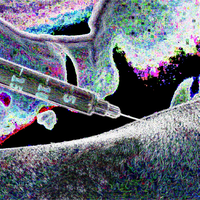| Aniline | |
|---|---|
| Salts [] | |
|---|---|
| %!s( | |
| %!s( | |
| Molecular structure via molpic based on CDK |
| Physical properties [] | |
|---|---|
| Molecular mass | 93.13 g/mol [1] |
| Density | 1.022 at 68 °F (EPA, 1998) - Denser than water; will sink g/cm3 [1] |
| Appearance | Oily liquid; colorless when freshly distilled, darkens on exposure to air and light [1] |
| Odor | Hedonic tone; pungent [1] |
| Taste | Burning taste [1] |
| Melting point | 21 ° [1] |
| Boiling point | 363 to 367 °F at 760 mmHg (EPA, 1998) [1] |
| Decomposition | Hazardous decomposition products formed under fire conditions - Carbon oxides, nitrogen oxides (NOx). [1] |
| Solubility | 10 to 50 mg/mL at 73 °F (NTP, 1992) [1] |
| Predicted LogP | 0.9 [1] |
| Structural Identifiers [] | |
|---|---|
| Molecular formula | C6H7N [1] |
| IUPAC name | aniline [1] |
| SMILES | C1=CC=C(C=C1)N [1] |
| InChI | InChI=1S/C6H7N/c7-6-4-2-1-3-5-6/h1-5H,7H2 [1] |
| InChIKey | PAYRUJLWNCNPSJ-UHFFFAOYSA-N [1] |
| Toxicity [] | |
|---|---|
| TDLo | Human - child: - oral: 3125 mg/kg |
| LDLo | Dog: - skin: 1540 mg/kg - intravenous: 200 mg/kg Cat: - oral: 100 mg/kg - subcutaneous: 100 mg/kg Rabbit: - oral: 500 mg/kg - subcutaneous: 1 gm/kg |
| LD50 | Rat: - oral: 250 mg/kg - skin: 1400 mg/kg - intraperitoneal: 420 mg/kg Mouse: - oral: 464 mg/kg - intraperitoneal: 492 mg/kg - subcutaneous: 200 mg/kg Dog: - oral: 195 mg/kg Cat: - skin: 254 mg/kg Rabbit: - skin: 820 uL/kg - intravenous: 64 mg/kg Guinea pig: - oral: 400 mg/kg - skin: 1290 mg/kg - intraperitoneal: 100 mg/kg Quail: - oral: 750 mg/kg Mammal (species unspecified): - oral: 500 mg/kg Bird - wild: - oral: 562 mg/kg |
Aniline
Aniline (also known as Benzenamine, Phenylamine, Aminobenzene, Aminophen, Arylamine, Kyanol, Anilin, Cyanol, Benzeneamine or Krystallin) is a
Chemistry
Salts []
Aniline is typically found in the form of its hydrochloride and hemisulfate salts.
Stereochemistry []
Aniline is a achiral mixture
See also []
External links []
References []
National Center for Biotechnology Information. PubChem Compound Summary for CID 6115, Aniline. Accessed August 6, 2025. https://pubchem.ncbi.nlm.nih.gov/compound/6115
U.S. Food and Drug Administration; National Center for Advancing Translational Sciences. Aniline. UNII: SIR7XX2F1K. Global Substance Registration System. Accessed August 6, 2025. https://gsrs.ncats.nih.gov/ginas/app/beta/substances/SIR7XX2F1K
 Anodyne
Anodyne